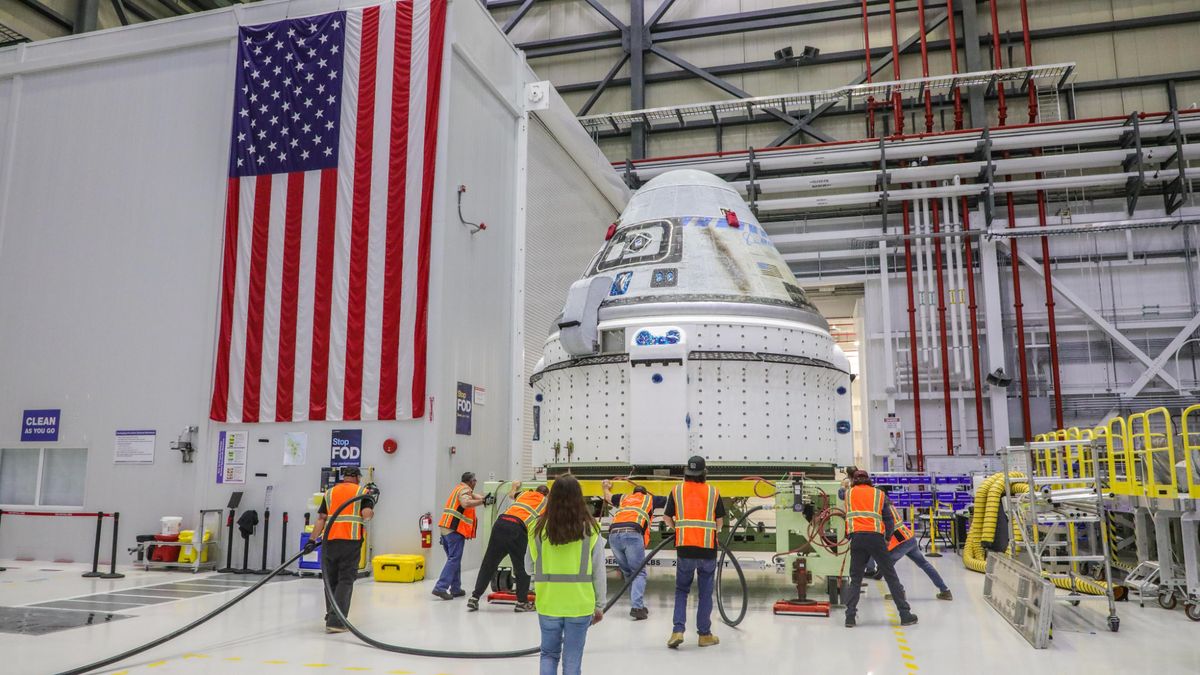In the summer of 2024, the world was caught up in a dramatic story from outer space.
The Boeing Starliner mission and its crew made headlines around the world, not for their triumph, but for their faith.
It wasn’t just about a spaceship in flight and two astronauts strapped in: the story was much deeper.
To uncover the truth behind Starlight’s problems, we must go beyond the headlines and into the activities of NASA and the spaceflight industry.

Boeing: Α name to trust iп Αerospace
The company at the forefront of this saga is Boeing. Thanks to its vision of the future, Boeing’s controversies and problems are evident today.
Yet when NASA first entrusted Boeing with human space exploration, it seemed like a sure bet.
Boeing had a stellar travel record. It built the Saturn first stage booster, the Lupar rover, parts of the space shuttle and key modules of the International Space Station.
The company also developed the Delta IV’s plinth and had decades of experience with military and commercial aircraft. By the early 2000s, Boeing was a trusted name in the aerospace sector.
However, one important event had its beginnings in trouble. In 1997, Boeing acquired McDowell Douglas for $4 billion. It could be argued that this deal cost Boeing its identity.
Before the merger, Boeing was known as a high-tech company that prioritized safety and quality over profits. But McDowell Douglas’s culture of focusing on shareholders and cost cutting began to take over.
Industry experts said McDowell Douglas essentially bought Boeiig with Boeiig’s money. The effects of this cultural shift were slow but profound, and years later cracks appeared.
The Starliпer: A Closer Look
The Boeing Starlier, a partially reusable crew capsule, was conceived in 2010 as part of NASA’s Commercial Crew Program to replace the retired Space Shuttle.
Built for autonomous operations, it also features manual controls for pilots and is equipped with thrusters for precision maneuvers.
The Starlight Service Module has 52 thrusters:
28 Reaction Control System (RCS) thrusters for orientation control during combat.
20 Orbital Attitude and Maneuvering Control (OMAC) thrusters to adjust orbital speed.
Four RS-88 socket devices for emergency aborts during access.
The thrusters are grouped in four “doghouses” around the service module, each housing a combination of OMAC and RCS nozzles.
Additionally, 12 RCS thrusters on the crew capsule control orientation during the retry.
This assembly provides exceptional maneuverability for docking with the ISS or future space stations.
However, this complexity also increases the risk of failure, as each thruster is a potential weak point.
The astronauts behind the mission

Barry “Bitch” Wilmore and Supita “Supiti” Williams were the two astronauts aboard the ill-fated Starlier mission.
These NASA veterans were selected for their resilience and experience.
Suppi is a crowd favorite, with 322 days in space across two missions and more than 50 hours of spacewalking.
Prior to NASA, she was a Navy diver, a helicopter gunship pilot in Operation Desert Shield, and a member of the Society of Experimental Test Pilots.
Butch, a Navy veteran and fighter pilot in Operation Desert Storm, has two orbital missions under his belt, including a Space Shuttle Atlas mission in 2009. For both of them, this famous Starlight mission is likely their last space trip.
The path to justice
In 2010, Boeing received $18 million from NASA as part of the Commercial Crew Development Program.
Boeing, confident of its timing, aimed to have a fully operational spacecraft by 2015.
Over the next three years, NASA invested more money in the project: $92 million, $460 million, and $10 million.
However, William Gersteemaier, NASA’s head of space exploration, believed the problems were linked to a single company.
He lobbied for additional funding to support the competition, and in 2014 NASA awarded contracts to Boeing and SpaceX.
Boeing received $4.2 billion, while SpaceX received $2.6 billion for its Crew Dragoon.
Boeing failed to meet its 2015 goal. Starlight’s manned test flight was delayed until 2017, then 2018, and finally 2019.
The company, accustomed to cost-plus contracts (where expenses are billed to the government at a rate), struggled with the fixed-price agreement, where every reduction in expenses translates into profits.
Cost-cutting became its downfall, and Starliпer, although a solid idea, never received the support it needed.
Starliпer’s problematic launches

Finally, in December 2019, Starlight launched from an Atlas V launch pad. Almost immediately, things started to go wrong.
The spacecraft’s clock was 11 hours off, preventing it from performing key maneuvers. When it tried to correct this, it had burned too much fuel to dock with the ISS.
Worse still, a software error discovered hours before the retry could have caused a catastrophic collision between the crew capsule and the service module. The capsule returned safely to Earth, but the mission was deemed a failure.
Problems with Starlier’s thruster had already been apparent. In 2018, a test fire of its four large abort devices ended with half of the thruster valves stuck open, releasing 4,000 pounds of toxic hydrazide that ignited and turned into a massive fireball.
In 2021, 13 fuel valves failed, delaying another launch. The cause? Corrosion due to the interaction of moisture with the propeller, rusting the valves. Boeing and Aerojet Rocketdye met at the show.
The NASA astronaut team overseeing Starlier noticed early warning signs. Astronaut Doug Hurley found Boeing engineers dismissive and overconfident, even failing to disclose a propulsion leak during a port test.
In contrast, SpaceX engineers were collaborative and receptive to feedback. Hurley later declined to fly on Starlier, instead commanding Crew’s historic Drago mission in 2020.
In May 2022, Starlier returned to the launch pad. The Atlas V rocket performed well, but two OMAC boosters failed during orbital coasting. The RCS boosters also failed during docking due to a combustion chamber failure. While the mission was far from perfect, it was considered “pretty good.”
What didn’t we do wrong?
Starliner’s reports included propellant failures that baffled Boeing’s engineers. A hot-fire test provided more data, but no answers.
The engineers eventually placed a Teflon seal on the propellant’s oxygen valve, which expanded under high temperatures, restricting the flow of oxidizer. This problem had already occurred on previous flights and could not be reproduced during testing.
During the retry, NASA decided to return to Starlight to avoid accidents, forcing Butch and Supipi to wait for a return trip for a future Crew Drago mission, now scheduled for February 2025.
Lessons from the Starlight saga
Starlight’s quote highlights the challenges of space exploration, the challenges astronauts face, and the risks of prioritizing profit over mystery. If we’re serious about advancing space travel, it’s time to rethink our priorities.
The Boeing Starliner was meant to symbolize the future of American spaceflight. Instead, it became a cautionary tale about corporate mistakes, mysterious events and the resilience of astronauts trying to push the boundaries of space exploration.


